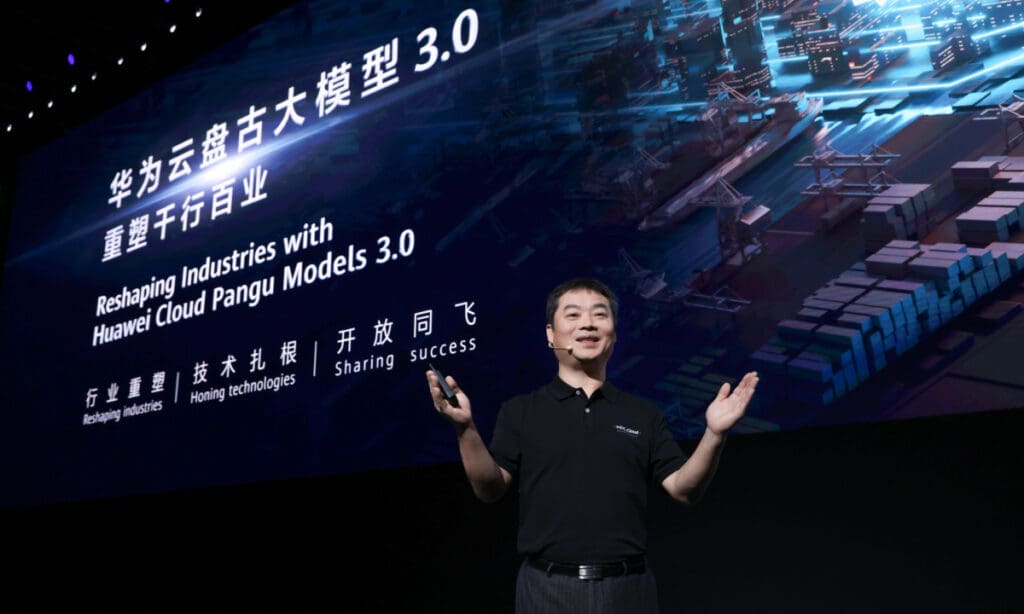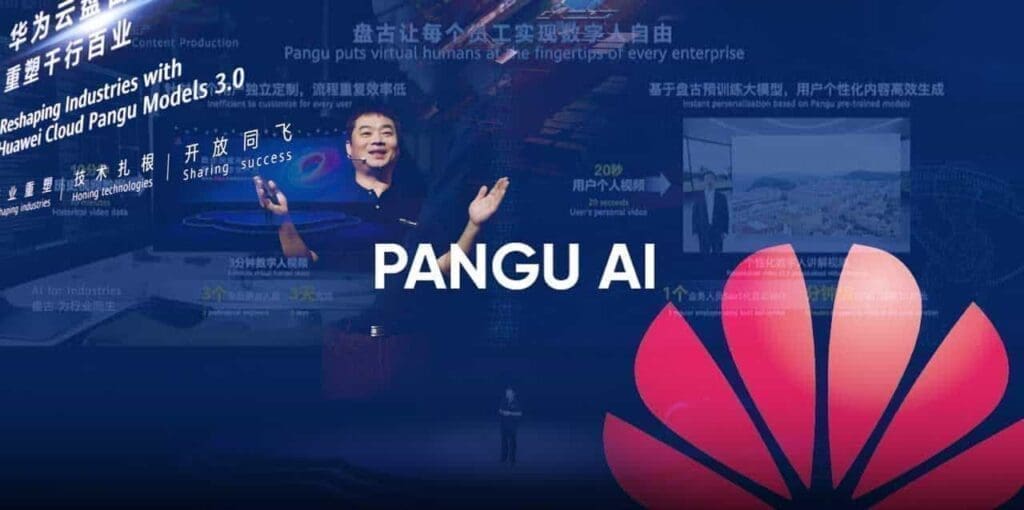Huawei Unveils Pangu 3.0: Latest AI Model

Huawei recently introduced Pangu 3.0, a new advanced pre-trained deep learning AI model, at the Huawei Cloud Developer Conference in China.
Pangu 3.0 is constructed with a three-tier architecture. The foundational layer, L0, consists of five distinct models that address natural language processing, multimodal databases, computer vision, forecasting, and scientific computation. This layer is designed to meet diverse industrial requirements by providing a variety of capabilities.
The intermediate layer, L1 e-government, is dedicated to sector-specific models, catering to fields such as finance, manufacturing, mining, and meteorology.

The top layer, L2, delivers models that are specialized for specific industry applications or business scenarios, enhancing the model’s applicability across various contexts.
Huawei invites users to employ and further train their datasets with the L0 or L1 Pangu layers, fostering innovation and customization.
Zhang Ping’an, Manager of Huawei and CEO of Huawei Cloud, stated that the Pangu series is engineered to meet the wide-ranging needs of different industries, aiming to offer enhanced services to clients from diverse sectors. He highlighted that Pangu’s goal is to assist customers in efficiently utilizing and developing large-scale models through intelligent updates.
The Pangu series was originally launched in 2021, featuring a suite of AI models that support a variety of natural language processing tasks, including text generation, text classification, and speech recognition systems.
The Pangu series has already demonstrated its value across various sectors, such as finance, manufacturing, pharmaceutical research and development, coal mining, and railway operations.
A recent article in Nature, a renowned scientific journal, highlighted Pangu’s weather forecasting AI model. The article describes the development of an accurate global AI weather forecasting system utilizing deep learning, trained on 43 years of weather data.

The model is capable of predicting intricate weather details such as humidity, wind speed, temperature, and sea level pressure in just seconds, illustrating Pangu’s remarkable accuracy and rapidity. This is in stark contrast to traditional forecasting methods, which can take from an hour to a week, with Pangu being 10,000 times faster in generating predictions.
Alongside Pangu 3.0, Huawei has introduced Ascend, an AI cloud service that provides extensive computing capabilities. Ascend’s single-board computer cluster offers 2,000 petaflops of computing power, and with a 1,000-board cluster, it’s possible to train models with billions of parameters non-stop for 30 days. Huawei claims this exceptional AI computing power significantly enhances the accessibility of large-scale language models for industry clients like never before.
You may also like this content
- Meta Building World’s Fastest AI Supercomputer for Metaverse
- Artificial Intelligence Will Make Decisions Instead Of People
- SingularityNET & Mandala: AI Metaverse
Follow us on TWITTER (X) and be instantly informed about the latest developments…











